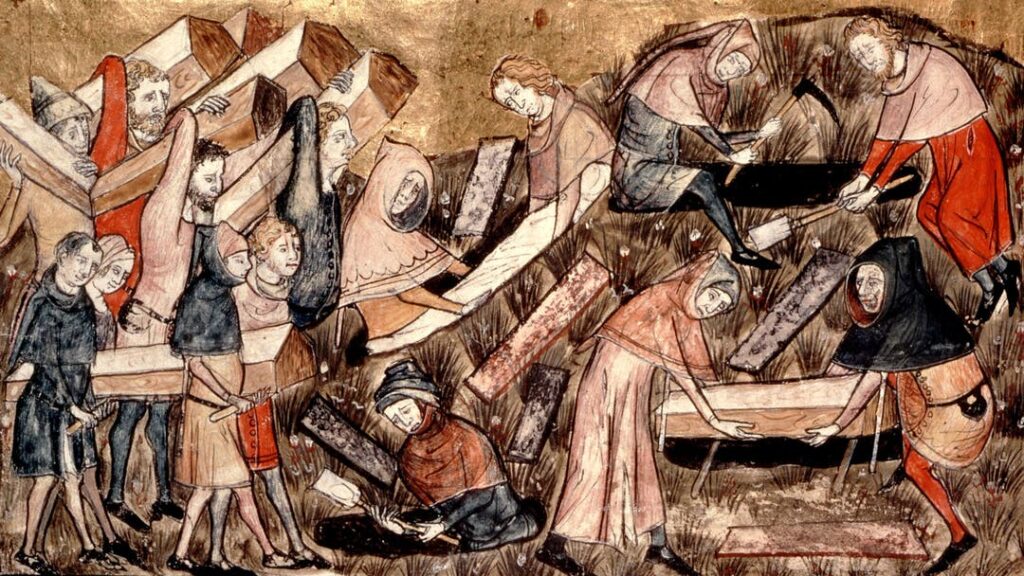Despite what these 14th-century scholars claimed the most common ailment known as the Black Death is caused by the yersinia pestis bacterium. The plague was carried by fleas that usually traveled on rats, but jumped off to other mammals when the rat died. It most likely first appeared in humans in Mongolia around 1320—although recent research suggests it may have existed thousands of years earlier in Europe. Usually, people who came down with the plague first complained of headaches, fever and chills. Their tongues often appeared a whitish color before there was severe swelling of the lymph nodes. Finally, black and purple spots appeared on the skin of the afflicted; death could follow within a week. Later, a pneumonic form of the plague developed that was less common but killed 95 percent of the people who contracted it.
After the nomadic tribes of Mongolia were devastated by the plague, it moved south and east to China and India. Wherever it went, the death toll was high. It is thought that the disease made its way to Europe in 1346. In one famous incident, the Tatars, a group of Turks, were battling Italians from Genoa in the Middle East when the Tatars were suddenly stuck down by the plague. Reportedly, they began catapulting dead bodies over the Genoans’ walls toward their enemy, who fled back to Italy with the disease. Although this account may not be true, it is certain that rats carrying the plague hitched rides on ships from Asia and the Middle East to Europe. In port cities everywhere, the Black Death began to strike. In Venice, 100,000 people died in total, with as many as 600 dying every day at the peak of the outbreak.











Leave a Reply